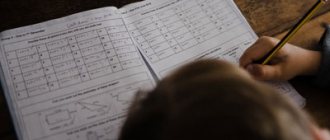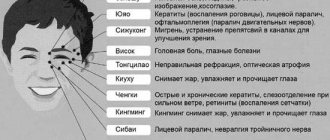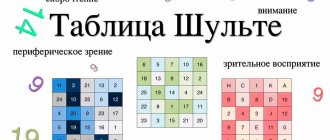Sometimes parents are faced with a situation where their child, for a painfully long time, cannot remember a seemingly simple rhyme assigned at school, but remembers some awkward song heard once. How to explain such “selective” memorization, is it possible to improve and develop memory? How to do it? These and many other questions concern parents, and interest in this topic is by no means idle: a good memory is the key to successful studies. Fortunately, this human resource is trainable. According to psychologists, the main thing is to choose the right method.
What types of memory are there?
To choose appropriate exercises for memory development, it is worth understanding how the memorization process occurs. To do this, let us turn to the generally accepted classification of memory.
- By duration:
- short-term (information is remembered easily, but also easily forgotten);
- long-term (data is stored in memory for a long time);
- prompt (information is retained for some time).
- Type:
- auditory (what is heard is better remembered);
- visual (visual images are easier to remember);
- motor (everything related to movement - remembers the body);
- figurative (emotional, associative);
- By degree of effort:
- involuntary (no effort required to remember anything);
- arbitrary (you need to try to remember an event or object);
- immediate (memorized mechanically, thinking does not “turn on”);
- indirect (requires building a logical chain, understanding the data).
By the way, children have a well-developed mechanical memory, so experts recommend starting to study foreign languages before school.
How does human memory work? There are three stages here:
- memorization;
- data storage;
- retrieval (reproduction) of data.
Peculiarities of memory of children of primary school age
At the stage of transition from the preschool period to the primary school period, the child has the following features of memory and the memorization process:
- visual-figurative memory predominates;
- there is a tendency to rote learning through repeated repetition;
- Concrete information is easier to remember than verbal explanations or abstract definitions;
- children remember for a long time the material that evokes an emotional response in them;
- thanks to increased curiosity, children remember information of interest easily and quickly;
- The more senses are involved in the learning process, the better everything will be remembered.
During primary school, significant changes occur:
- there is a transition from involuntary to voluntary memorization;
- the formation of verbal-logical memory begins.
The first time after entering 1st grade, the child uses the natural capabilities of his memory. It’s easier for him to memorize the material without delving into its meaning.
On average, at the age of 7, the process of formation of natural memory is completed, and it does not develop further.
Primary school students gradually develop a tendency to use voluntary memorization. Younger students learn to use various methods to facilitate memorization. The problem is that they cannot yet independently plan and control the memorization process, or give themselves the necessary instructions. Therefore, they will need help from teachers and parents.
The years of primary school are the most successful age period for targeted memory development. After all, in the future there will be much more educational information. In addition, it is complexly organized and difficult to remember. This suggests a disappointing conclusion: if due attention is not paid to this issue in a timely manner, then education in high school will be ineffective.
How to develop long-term memory?
Human memory is quite subjective, since after each subsequent reproduction of information, memories are distorted.
The task of parents is to develop and train the child’s long-term memory. To do this you need:
- Teach your child the ability to compare objects of memorization, find similarities and differences in them (children's magazines with colorful pictures and tables are suitable for training, in which you are asked to find either identical objects or find subtle differences in them);
- Practice retelling by the child any information he has received - a cartoon he has watched, a story he has read, an experience he has experienced (trains memory, develops speech, allows him to correctly compose sentences);
- Learn poems, tongue twisters, solve crosswords;
- Gradually move on to memorizing prose (one interesting exercise can be suggested here). For example, read a small passage of text in a magazine and cut out this fragment. Then cut it into pieces, give the child one part and offer to reconstruct the entire plot from it.
Training auditory memory
The more we train our memory, the more we can remember. So, let’s begin exercises to develop auditory memory in younger schoolchildren. Classes can be conducted both in groups and individually.
- Add yours
This exercise is good to practice in a group. This is the principle here. An adult suggests a simple plot, for example, a trip or a trip to the store. It starts like this: “I put a book in my suitcase (bag). The child must repeat this sentence from the beginning and add something of his own. For example: “I put a book and pencils in my suitcase (bag). The second participant in the class repeats everything from the beginning again (the phrase is already longer) and adds his own.
- Remember the rhythm
With a pencil or stick, you tap on the table in a certain rhythm and invite the child to repeat it. You need to start with simple sounds; as the student masters it, the rhythm can be complicated.
- Let's sing songs
For the development of auditory memory, such a simple technique as singing songs in the voices of familiar cartoon characters, for example, effectively helps. In order to imitate someone else's voice, the child will have to remember its timbre, volume, intonation and rhythm.
- Looking for a couple
The training consists of two stages. In the first stage, you read pairs of words. For example: flower - vase, school - student, hare - forest, river - bank. At the second stage, you name one word from the read pair and invite the child to name the second. If your student copes, then everything is fine with both memory and logic.
- Let's play in associations
This is a more challenging exercise, although your child will definitely enjoy it. Prepare several cards on which you depict objects and animals. For example, fox, sweater, sun, bus. Place the cards in front of your child. Set a task: you name the words, and the child selects a picture to go with them. Words could be: forest, clothes, weather, garage.
Visual memory
To develop this type of memory, you can use the following exercises:
- Color pictures
You will need from three to five pictures of different colors. Show them to your child in a certain sequence and ask them to repeat. Check for correctness.
- Geometric figures
This exercise trains photographic memory well. Draw a cartoon character in the form of geometric shapes on a piece of paper. As usual, this is either a robot or an astronaut/alien. There should be no more than four geometric shapes. Show your child the drawing for 30 seconds so that he can study it in detail. Then ask them to draw what they remember. You can prepare three drawings in advance. At each subsequent one, slightly change some detail. When checking a task, pay attention to how accurately it was completed.
- Describe the picture
You need to prepare up to five versions of drawings that depict several objects. The shape and color are different. Let your child study what is shown for 10 seconds, then let him close his eyes and describe in detail what he remembers. Gradually, the task can be complicated by increasing the number of objects in the picture.
Attention diagnostics for preschoolers
Professional diagnostics are carried out by specialists. But parents, with the help of simple attention tests, can easily determine the scale of the problem or its absence. Classes require a minimum of time and available materials:
- Prepare cards with pictures of various objects . For kids - as simple as possible, for younger preschoolers - seasons, professions. Give 10 seconds to memorize, remove one card. Children aged 3 should correctly guess problems with 4 cards. For the older ones, make the tasks more difficult, mix up the images, ask them to arrange them in the original sequence.
- This test determines attention span. On a sheet of paper, draw a series of geometric shapes, possibly repeating ones . After 10 seconds, remove or turn the sheet over. A good result is if the child was able to repeat the sequence for 5-9 figures (depending on age).
- Cut out or print out images of various objects, inscriptions, signs from a magazine . Paste 9-12 fragments onto a sheet of paper, give 20 seconds to memorize the drawing. In children of primary preschool age, the average level is considered to be 7-8 images, which he could subsequently name. For older people, the task should be made more difficult. Ask questions about the number of items, for example: “How many flowers are in the bouquet? or “What animal is there a question mark over?”
These are not only tests, but also excellent exercises for developing attention in children of different ages.
Important! Exercise regularly for 10 minutes a day. Try to conduct activities to develop memory and attention in a playful way.
Developing associative memory
The development of associative memory in elementary school students is a very effective method. There is a whole science for training the formation of associations - mnemonics. Exercises to develop associations include diagrams, tables, pairs of words that are not related in meaning. Regarding the latter, name a couple of words that have different meanings and give the child the task of coming up with a story using these words. And diagrams and tables with pictures will teach children to write stories; perform some manipulations in a certain sequence, for example, getting dressed. Mnemonic diagrams help increase vocabulary and quickly memorize text. They say that a poem is best remembered if you “see” it.
How to improve a student's memory?
If you see that your student is inattentive, does not remember well what he is told at school and at home, and cannot concentrate, of course, you should not put up with this state of affairs. It takes effort, and your child will study better, become more focused and generally more successful. And there are several simple ways to do this.
- Read good literature
Of course, it is difficult to tear a modern child away from correspondence on social networks, watching cartoons, and computer games. But for loving parents nothing is impossible. Convince your child, using personal example, that reading is not only useful, but also fashionable. Give him an e-reader so he can read whenever he gets the chance. Choose good literature for him.
- Learn new things
Mastering new skills trains your memory very well. If your child does not play sports or attend hobby groups, tell him that all this exists and is available. If he is already doing something, offer to learn a new sport or attend a music school, and at the same time find out what your child is passionate about.
- Develop your vocabulary
Not only reading books will help here. You can organize this game at home: every day - a new word. Introduce your child to difficult words; the Internet will help them interpret them. It will be interesting and useful for parents too.
- Learn from memory
Learn poems assigned at school with your child. Tell him about your poetic preferences, how you memorized poems as a child.
- Remember the numbers
Memorizing numbers has a great effect on memory development. These could be dates of birth of relatives and friends, mobile phone numbers. Tell your child how best to remember them. If there are other children in your family, organize a competition between them “Who can remember the most.”
- Get proper rest
Healthy sleep, sufficient time for a child of primary school age (at least 10 hours in a well-ventilated area), as well as walks in the fresh air (up to two hours daily) perfectly stimulate brain function and, accordingly, have a positive effect on memory. Don't neglect these simple rules.
Tips for training a child's memory
Not only teachers can work with children. Parents can teach their baby at home. First of all, you need to create a calm environment at home. Stress and worries will not contribute to development.
Education can begin from preschool age
In preschool age, a child especially needs emotional interaction. That's why they hug and kiss him every day. Adults should not sort things out in front of a child, as this will negatively affect his psyche.
Important! You can create rituals, for example, a certain number of hugs per day.
Physical activity also has a beneficial effect on child development. Even a regular walk with a slide or carousel will help fill the body with oxygen, which is important for the functioning of the nervous system.
Fun also influences attentiveness. Therefore, you should not pull your child back, preventing him from having fun and fooling around. Such pastime is important for the development of creative abilities.
Game forms
In preschool age, the leading developmental activity is play. Therefore, you should not expect that your baby will begin to sit diligently at the table. This is especially true at 4 years of age and older - during this period children are not particularly inclined to traditional learning.
With the help of toys, you can create many situations that will promote memory development. For example, a child is offered to go to a store with a doll and buy a certain set of goods. Gradually, the number of items is increased from 2 items to six or more.
Finger games help a lot, as they involve a certain sequence of actions being counted. Memo games where you need to look for two identical pictures have proven themselves well.
The relevance of traditional memorization of poetry
There are different methods for developing memory. One of the most popular is memorizing poetry. For preschool children, simple quatrains are used that are easy to rhyme and memorize.
With the help of poetry, children broaden their horizons, learn to rhyme poetry and develop a cultural level
Exercises with poems are easy for those who have a good memory. Therefore, it is necessary to select the right material, taking into account the individual characteristics of the child. Memory training begins with small poems of three or four lines.
Explanation of English reading rules for a child
To facilitate the process, use a little help in the form of visual support. For this purpose, special schemes are drawn up, which consist of small symbols. In this case, the child uses vision to memorize and it is easier for him to assimilate the verse.
Memorizing a poem allows you to improve your memory in the shortest possible time. Therefore, such exercises begin to be given from kindergarten.
Educational games to improve memory - on the IQClub website
To develop memory, not only exercises are used, but also games. IQClub is an Internet service that offers educational games for training a child’s memory, attention, reading skills, and thinking. To use the services of this online portal, you need:
- register in the system;
- for a child to take a test that interests him.
After this, IQClub specialists will select an individual training program for your child, based on an analysis of his strengths and weaknesses.
Game development is carried out by a team of professionals - the best psychologists, teachers, designers.
Parents can track learning results online. Useful games on the IQClub website are an excellent simulator for developing a child’s intelligence.
Recommendations for developing the memory of younger schoolchildren
Memory is given to each of us at birth, but not everyone can use it correctly. The task of parents and teachers is to teach the student memorization techniques so that he subsequently uses them unconsciously. The child must understand for himself how it is easier for him to remember information. However, any science will not be useful if the student lacks motivation to study. In such a situation, it is the sacred duty of the parents to interest the child, and for a good result, conduct classes systematically. During these classes, educational psychologists recommend that parents pay attention to the following:
- make sure that the child understands the material he is memorizing;
- let the child repeat the learned text the next day;
- when working on memorizing a text, break it into small passages, but not very small, so that your student does not forget what happened at the very beginning;
- while memorizing a text, ask your child to pronounce it out loud;
- motivate your child to memorize, show imagination: offer for study only those texts that are really interesting to him;
- Work with your child for no more than half an hour, and at first for 15 minutes. If you see that the baby is tired, take a break;
- always praise your child for even the smallest successes, encourage him to practice.
When working with your child, help him complete tasks, tell him what memorization tactics are best to use. Thus, your baby will not only learn to remember, he will perceive information consciously and then it will remain in his memory for a long time.
Is it possible to develop memory in children?
In a healthy child, all higher mental functions appear at the appropriate age. With every year of life they improve and improve. This process needs to be directed, since it occurs only under the influence of external factors.
The life of a baby should be eventful. They provide emotions that stimulate the nervous system. The more a child comes into contact with different materials and learns to manipulate objects, the better his cognitive functions develop.
Drawing improves fine motor skills, which are important for thinking
Psychologists are beginning to notice more and more that many problems in childhood can not only be corrected, but also prevented. Before going to school, it is better to work on the development of higher mental functions, which will help in further studies.
For this purpose, special classes are conducted using certain methods. Each approach has its own advantages and disadvantages. There is no consensus among experts about whether it is possible to make a child a genius.
You can develop attentiveness, memory, and thinking at any age. It is optimal to do this from the age of one, since during this period the foundation for cognitive functions is laid.









